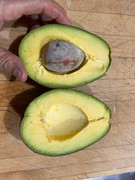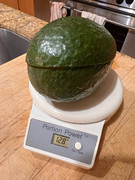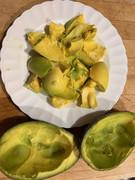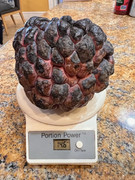26
Tropical Fruit Discussion / Reed avocado, welcomed surprise
« on: January 16, 2022, 09:19:27 AM »
I have this Reed tree since 2013. In the last few years never paid much attention to it because by the end of December all the fruit was in the ground and before December the fruit was small and not reach it best maturity.
This year seems to be different. The tree has 40-50 fruit, it is holding them well, the fruit is continuing to grow. I picked one in early January and allow it to ripen in the counter. These are the attached pictures. Very clean an acceptable taste.
The only explanation I have is that we had a cooler November, allowing the tree to make a transition without dropping the fruit.
I wonder if anyone else is growing it in Florida?



This year seems to be different. The tree has 40-50 fruit, it is holding them well, the fruit is continuing to grow. I picked one in early January and allow it to ripen in the counter. These are the attached pictures. Very clean an acceptable taste.
The only explanation I have is that we had a cooler November, allowing the tree to make a transition without dropping the fruit.
I wonder if anyone else is growing it in Florida?



















